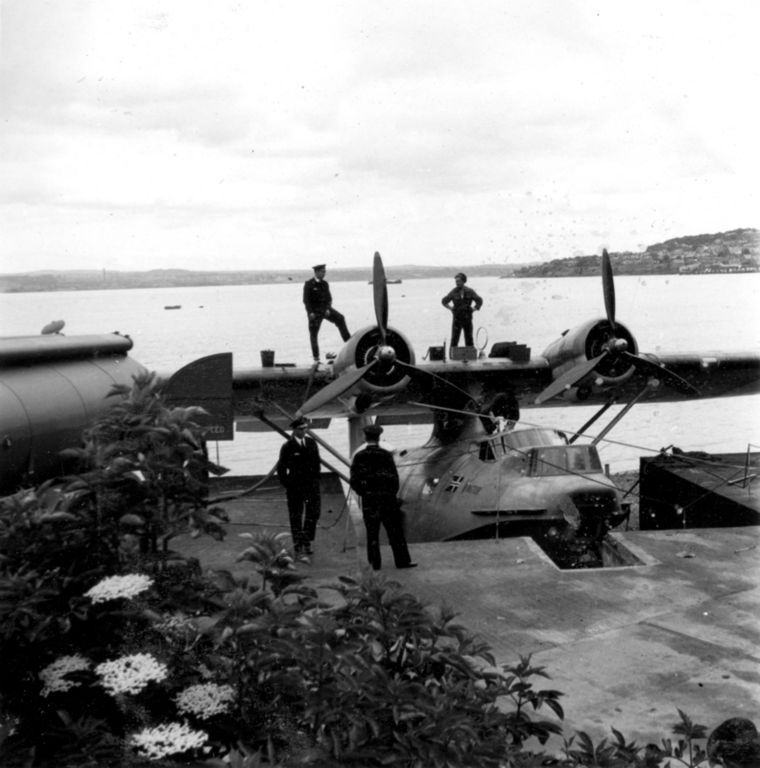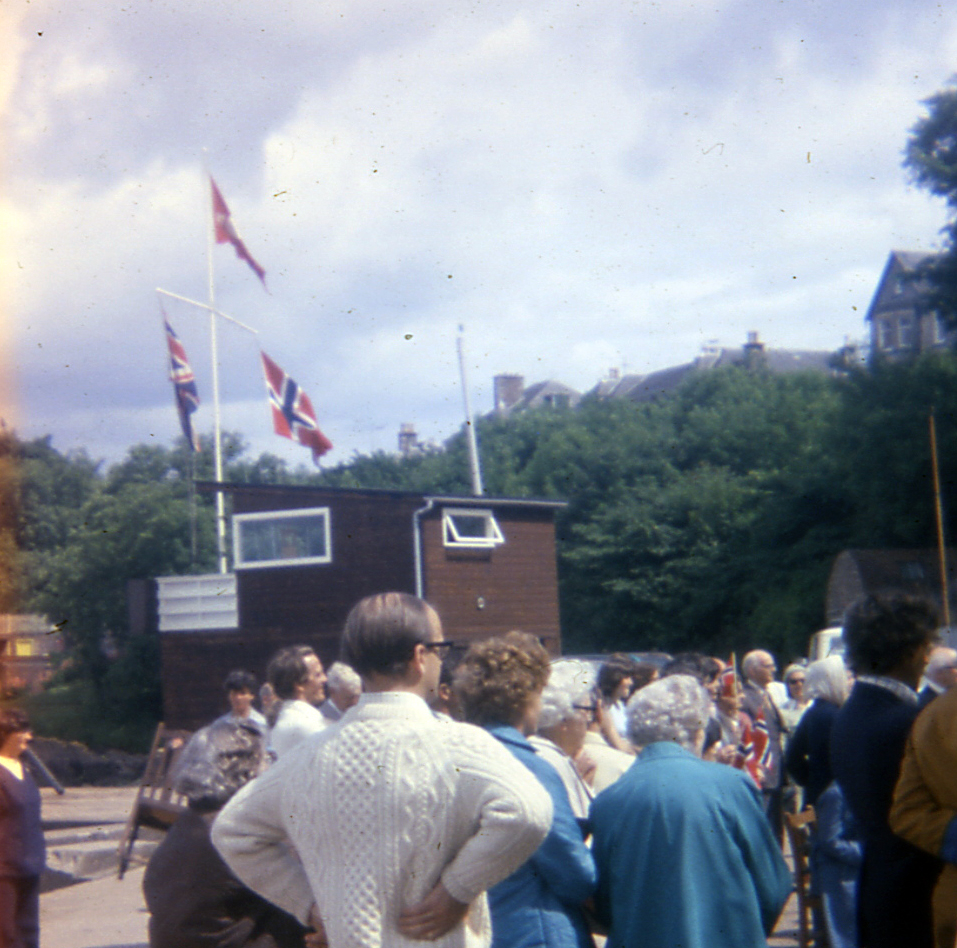333 Squadron of the Royal Norwegian Airforce was formed when the Norwegian flag was first raised at Woodhaven on February 8th 1942. Ten days later the first Catalina PBY aircraft, designated W8424 and called Vingtor after the old Norse War God, landed in the bay.
Finn Lambrechts, the squadron’s first commander, and his flight engineer, Hans Ronningen, had flown the northern route of the Norwegian Airline DNL before they escaped from the Germans, as many others did by a variety of routes finally leading to Britain. Commander Lambrechts had observed that German defences were weak along the coast of Heligoland so that it would be possible to put agents ashore to watch and report on German coastal shipping. His proposal to form a unit was supported by the Norwegians and finally received the approval of Coastal Command.
Woodhaven was chosen as the base because of its relatively isolated location which served the need for secrecy, and Catalinas – designed for anti submarine warfare and convoy escort duties – were chosen for the work. Norwegians from all over the world provided the ground crews, flight engineers and other staff needed. Initially the unit was a detachment from 210 Squadron RAF Coastal Command designated No 1477 Flight.

The Catalinas flew agents into Norway during 1942 and most of 1943. When these activities became too well known to the Germans they were used for anti submarine work and convoy escort duties to protect the American convoys heading for Murmansk. The Catalinas also patrolled ahead of the convoys to report on ice conditions. Towards the end of the war they again began to take in agents. Coded messages broadcast by the Norwegian service of the BBC were used to tell agents (and the squadron) the day on which they would be picked up or receive supplies. Sometimes the weather interfered and the date, but not the time, of an operation would be changed.
On 23rd December 1942, they flew from Woodhaven to Norway to deliver 52 sacks of Christmas presents from a height of 50 feet.
Only one casualty occurred to the Catalinas during the war when one of the flying boats was crippled by anti-aircraft fire on a raid to Norway, but it managed to get back in safety.
In March 1943 six Mosquitoes under the command of Captain Larsen were sent to Leuchars to carry out offensive action along the Norwegian coast line. On May 10th 1943 the two units were officially established as a squadron. ‘A’ Flight flew Catalinas from Woodhaven and ‘B’ Flight operated Mosquitoes from Leuchars. The squadron motto is ‘Our King our Country and the honour of our Flag’.
Contact between the Norwegians and Woodhaven residents was chiefly through William Rankine who was a firm friend of Norway and came to mean a lot to the young airmen. Other locals also did their best to help and one such was Lady Bluebell Walker who opened her home (later to become the Sandford Hotel) to the Norwegians.
King Haakon visited the unit 3 times and Crown Prince Olav once. In July 1944 King Haakon planted the two laburnum trees which are now tended by the Wormit Boating club.
The Squadron used the ‘Mars Sheds’ at Woodhaven Pier and also took over Rock House as a headquarters. Local properties, including Dunvarlich and Netherlea, were also used.
Immediately after the war the 333 Squadron took an active part in the reconstruction of northern Norway and the island settlements. Careful planning was needed to cope with the huge demand for help to restore communications.
In due course the Catalina aircraft was pensioned off to be replaced first by the Albatross and later by the Orion – a 4-engined aircraft with a cruising range of 16 to 18 hours. B Flight was later formed into 334 Squadron and now operates the Starfighter.
333 Squadron’s primary task remains the surveillance of surface underwater and air traffic including rescue operations along the Norwegian coast and in the neighbouring ocean areas. Since January 1st 1977 it has also had the specific task of watching over Norway’s 200 mile economic zone.
The memorial stone with its bronze plaque next to the laburnums and the flag pole at the Boating Club’s Race Box were generously provided by the Norwegians following correspondence between David Owen when Treasurer and Major (later Colonel) Egil Johansen who flew many missions to Norway from Woodhaven.

The stone was unveiled on 4th May 1975 by General Stenwig, R No A F, a Woodhaven veteran.
To this day, Norwegians still visit Woodhaven and the Norwegian flag is flown on Norwegian National Day, maintaining a tradition started by Mr Rankine after the war.
Over 840 photographs taken by the Norwegians during their stay are now here in the Galleries. They are reproduced with thanks to Gerd Garnes, their owner.

Note that the first P-8A Poseidon to be flown by No 333 Sqn RNoAF will be called Vingtor – the same name as their very first Catalina!
Yes, thanks for the information. Continuing a Royal Norwegian Air Force tradition of nearly 80 years.
Thanks,
William Owen